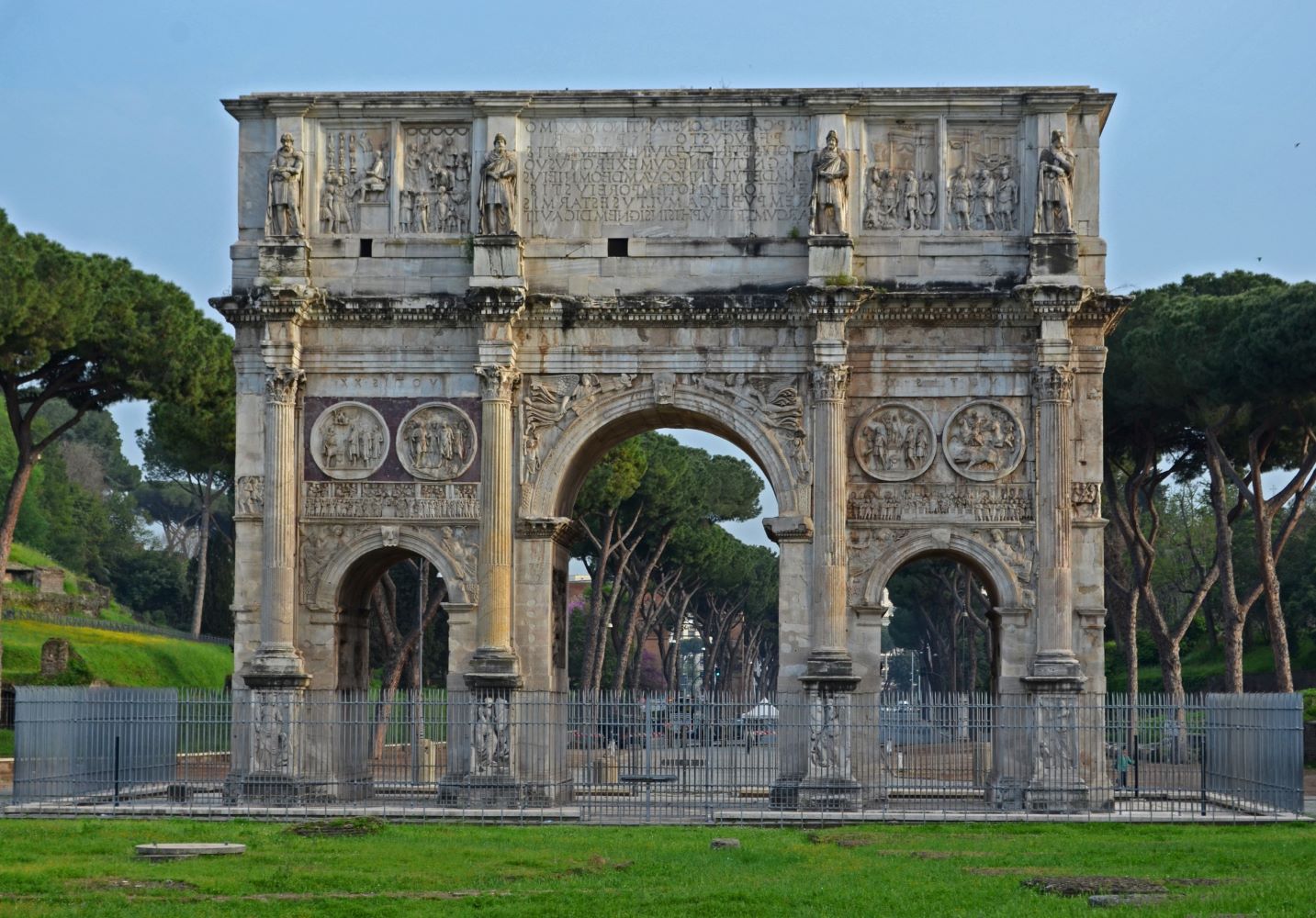
Ever wondered about the stories behind ancient monuments? The Arch of Constantine is one of Rome's most iconic structures, standing tall since 315 AD. This triumphal arch isn't just a stone relic; it's a testament to Roman engineering and artistry. Built to commemorate Emperor Constantine's victory at the Battle of Milvian Bridge, it blends history, politics, and religion in its intricate carvings and inscriptions. From its towering columns to the detailed reliefs, every inch tells a tale of power and glory. Ready to dive into some amazing facts about this architectural marvel? Let's uncover the secrets of the Arch of Constantine and see what makes it a must-visit landmark in Rome!
The Arch of Constantine: A Historical Marvel
The Arch of Constantine stands as a testament to ancient Roman engineering and artistry. Erected to commemorate Constantine I's victory over Maxentius, this monumental arch has fascinated historians, tourists, and scholars alike. Let's dive into some intriguing facts about this iconic structure.
-
The Arch of Constantine was built in 315 AD to celebrate Constantine I's victory at the Battle of Milvian Bridge.
-
It is the largest surviving Roman triumphal arch, standing at 21 meters high, 25.9 meters wide, and 7.4 meters deep.
-
The arch is located between the Colosseum and the Palatine Hill in Rome, a prime spot for ancient Roman architecture.
-
The structure has three archways: a large central arch flanked by two smaller ones.
-
The arch is decorated with sculptures and reliefs taken from earlier monuments, a practice known as spolia.
Architectural Features and Design
The design of the Arch of Constantine is a blend of old and new elements, showcasing the ingenuity of Roman architects. Here are some fascinating details about its architectural features.
-
The central archway is 11.5 meters high and 6.5 meters wide, allowing for grand processions.
-
The two smaller archways are each 7.4 meters high and 3.4 meters wide.
-
The arch is made of white marble and brick, materials commonly used in Roman architecture.
-
Four Corinthian columns, two on each side, frame the central archway.
-
The attic of the arch features an inscription in Latin, dedicating the monument to Constantine's victory.
Sculptures and Reliefs
The Arch of Constantine is adorned with numerous sculptures and reliefs, many of which were repurposed from earlier monuments. These artworks add to the arch's historical significance.
-
The reliefs on the arch depict scenes from various Roman emperors' reigns, including Trajan, Hadrian, and Marcus Aurelius.
-
The spolia used in the arch were taken from monuments built during the 2nd century AD.
-
The arch features eight roundels, or circular reliefs, depicting scenes of hunting and sacrifice.
-
The Dacian prisoners, sculpted on the arch, were originally part of Trajan's Forum.
-
The arch's attic is adorned with reliefs showing Constantine's victory over Maxentius.
Historical Significance
The Arch of Constantine is not just an architectural marvel; it also holds immense historical significance. Here are some key historical facts about the arch.
-
The arch was commissioned by the Roman Senate to honor Constantine's victory.
-
It marks the first time a Roman monument was dedicated to a Christian emperor.
-
The Battle of Milvian Bridge, commemorated by the arch, was a turning point in Roman history, leading to Constantine's conversion to Christianity.
-
The arch symbolizes the transition from pagan Rome to Christian Rome.
-
It has been a source of inspiration for many later triumphal arches, including the Arc de Triomphe in Paris.
Preservation and Legacy
Despite the passage of time, the Arch of Constantine has been remarkably well-preserved. Its legacy continues to influence architecture and art to this day.
-
The arch underwent restoration in the 18th and 19th centuries to preserve its structure and artwork.
-
It has been a UNESCO World Heritage Site since 1980, as part of the historic center of Rome.
-
The arch is a popular tourist attraction, drawing millions of visitors each year.
-
It has inspired numerous replicas and adaptations in various parts of the world.
-
The arch's design elements, such as the use of spolia, have influenced modern architectural practices.
Fun Facts
Beyond its historical and architectural significance, the Arch of Constantine has some fun and lesser-known facts that add to its charm.
-
The arch was featured in the 1953 film "Roman Holiday," starring Audrey Hepburn and Gregory Peck.
-
It has been the subject of numerous paintings and sketches by artists throughout history.
-
The arch is often used as a backdrop for concerts and events in Rome.
-
It has survived several earthquakes and natural disasters over the centuries.
-
The arch's reliefs provide valuable insights into Roman military and cultural practices.
-
The Arch of Constantine is one of the few monuments in Rome that has never been buried or lost to history.
-
It remains a symbol of Rome's enduring legacy and its influence on Western civilization.
The Arch of Constantine's Lasting Impact
The Arch of Constantine stands as a testament to Roman engineering and artistry. Built to honor Emperor Constantine's victory, it’s a blend of recycled sculptures and original designs. This arch isn't just a monument; it’s a historical narrative carved in stone. Each relief and inscription tells a story of triumph and legacy.
Visitors today can still marvel at its grandeur, imagining the ancient celebrations that once took place. The arch’s strategic location near the Colosseum makes it a must-see for anyone exploring Rome. It’s a reminder of how history shapes our present, offering lessons in resilience and creativity.
Whether you're a history buff or just curious, the Arch of Constantine offers a glimpse into a world long past but never forgotten. It’s a symbol of enduring human achievement and cultural heritage.
Was this page helpful?
Our commitment to delivering trustworthy and engaging content is at the heart of what we do. Each fact on our site is contributed by real users like you, bringing a wealth of diverse insights and information. To ensure the highest standards of accuracy and reliability, our dedicated editors meticulously review each submission. This process guarantees that the facts we share are not only fascinating but also credible. Trust in our commitment to quality and authenticity as you explore and learn with us.


